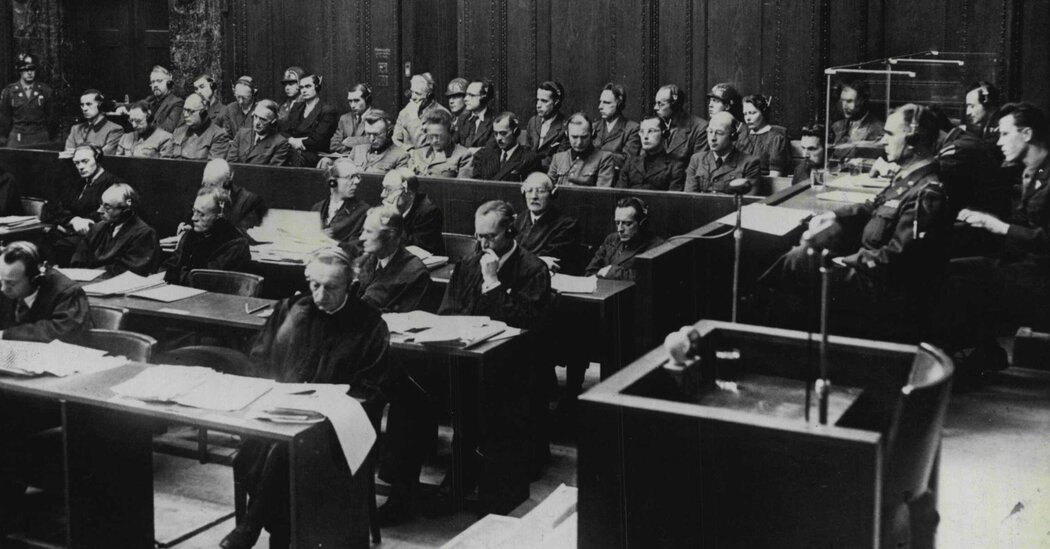A new article in the New England Journal of Medicine, one of the oldest and most esteemed publications for medical research, criticizes the journal for paying only “superficial and idiosyncratic attention” to the atrocities perpetrated in the name of medical science by the Nazis.
The journal was “an outlier in its sporadic coverage of the rise of Nazi Germany,” wrote the article’s authors, Allan Brandt and Joelle Abi-Rached, both medical historians at Harvard. Often, the journal simply ignored the Nazis’ medical depredations, such as the horrific experiments conducted on twins at Auschwitz, which were based largely on Adolf Hitler’s spurious “racial science.”
In contrast, two other leading science journals — Science and the Journal of the American Medical Association — covered the Nazis’ discriminatory policies throughout Hitler’s tenure, the historians noted. The New England journal did not publish an article “explicitly damning” the Nazis’ medical atrocities until 1949, four years after World War II ended.
The new article, published in this week’s issue of the journal, is part of a series started last year to address racism and other forms of prejudice in the medical establishment. Another recent article described the journal’s enthusiastic coverage of eugenics throughout the 1930s and ’40s.
“Learning from our past mistakes can help us going forward,” said the journal’s editor, Dr. Eric Rubin, an infectious disease expert at Harvard. “What can we do to ensure that we don’t fall into the same sorts of objectionable ideas in the future?”
In the publication’s archives, Dr. Abi-Rached discovered a paper endorsing Nazi medical practices: “Recent changes in German health insurance under the Hitler government,” a 1935 treatise written by Michael Davis, an influential figure in health care, and Gertrud Kroeger, a nurse from Germany. The article praised the Nazis’ emphasis on public health, which was infused with dubious ideas about Germans’ innate superiority.
“There is no reference to the slew of persecutory and antisemitic laws that had been passed,” Dr. Abi-Rached and Dr. Brandt wrote. In one passage, Dr. Davis and Ms. Kroeger described how doctors were made to work in Nazi labor camps. Duty there, the authors blithely wrote, was an “opportunity to mingle with all sorts of people in everyday life.”
“Apparently, they considered the discrimination against Jews irrelevant to what they saw as reasonable and progressive change,” Dr. Abi-Rached and Dr. Brandt wrote.
For the most part, however, the two historians were surprised at how little the journal had to say about the Nazis, who murdered some 70,000 disabled people before turning to the slaughter of Europe’s Jews, as well as other groups.
“When we opened the file drawer, there was almost nothing there,” Dr. Brandt said. Instead of discovering articles either condemning or justifying the Nazis’ perversions of medicine, there was instead something more puzzling: an evident indifference that lasted until well after the end of World War II.
The journal acknowledged Hitler in 1933, the year he began implementing his antisemitic policies. Seven months after the advent of the Third Reich, the journal published “The Abuse of the Jewish Physicians,” an article that today would most likely face criticism for lacking moral clarity. It appeared to be largely based on reporting by The New York Times.
“Without providing any details, the notice reported that there was some indication of ‘a bitter and relentless opposition to the Jewish people,’” the new article said.
Other journals saw the threat of Nazism more clearly. Science expressed alarm about the “crass repression” of Jews, which took place not only in medicine but also in law, the arts and other professions.
“The journal, and America, had tunnel vision,” said John Michalczyk, co-director of Jewish Studies at Boston College. American corporations avidly did business with Hitler’s regime. The Nazi dictator, in turn, looked favorably at the slaughter and displacement of Native Americans, and sought to adopt the eugenics efforts that had taken place across the United States throughout the early 20th century.
“Our hands are not clean,” Dr. Michalczyk said.
Dr. Abi-Rached said she and Dr. Brandt wanted to avoid being “anachronistic” and viewing the journal’s silence on Nazism through a contemporary lens. But once she saw that other medical publications had taken a different tack, the journal’s silence took on a fraught new meaning. What was said was dwarfed by what was never spoken.
“We were looking for strategies to understand how racism works,” Dr. Brandt said. It seemed to work, in part, through apathy. Later, many institutions would claim that they would have acted to save more of the Holocaust’s victims had they known the extent of the Nazis’ atrocities.
That excuse rings hollow to experts who point out that there were enough eyewitness reports to merit action.
“Sometimes, silence contributes to these kinds of radical, immoral, catastrophic shifts,” Dr. Brandt said. “That’s implicit in our paper.”
Source link

